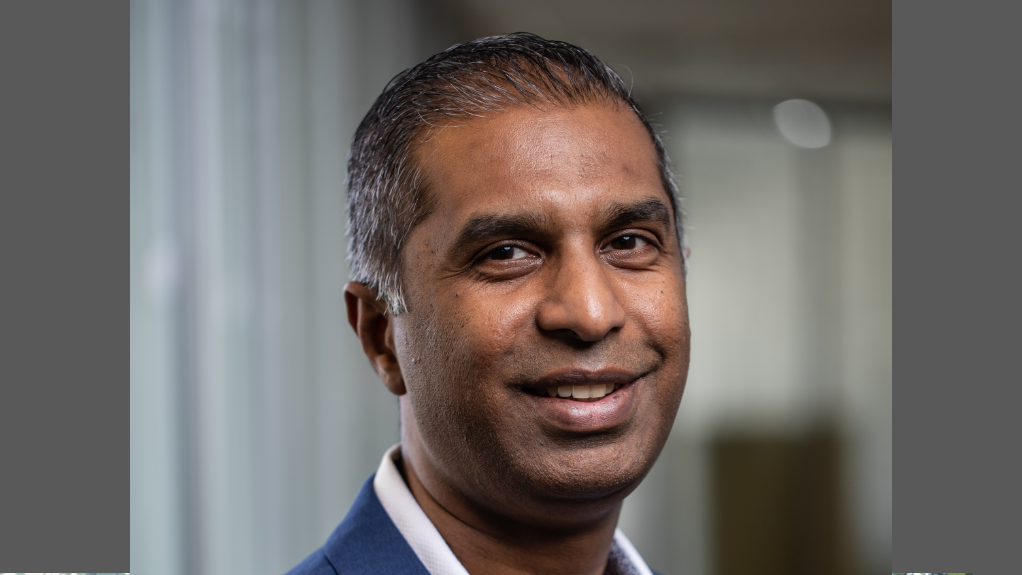The energy crisis calls for prosumers
This article has been supplied as a media statement and is not written by Creamer Media. It may be available only for a limited time on this website.
By Kesavan Chettiar, Senior solutions specialist at Technodyn International
With the dust far from settled on the energy crisis and the relaxation of power generation regulations, South Africa is starting to see the rise of the energy prosumer. Fuelled by the popularity of renewable energies, the surge in alternative energy generation is introducing its own management challenges and calls for the implementation of the right technologies to help businesses, governments, and prosumers better manage this diversification.
The prosumer is an amalgamation of a producer and consumer who has decided to leap from passive consumers of centralised, large-scale generated electricity to active energy producers for their own consumption. Locally, this market comprises mines, data centres, manufacturing businesses, and households, to name a few, who are investing in solar panels, turbines or hydropower and batteries to generate, store and supply electricity to cater for their own needs.
It remains difficult (and expensive) for organisations to move entirely off the grid, which has resulted in a massive spike in hybrid energy systems in South Africa. It's a conundrum, as companies are now finding themselves not only managing their own business operations but power generation too – which many remain unfamiliar with. The benefit is a reduced reliance on Eskom and more control of energy storage and consumption.
An energy state of mind
Not all prosumers are energy experts, and renewable energy assets have different maintenance schedules requiring unique skills. Maintenance often needs to be conducted across dispersed locations as generation devices typically have a larger geographical distribution. Field service management is key to effectively managing this type of environment.
Other challenges facing the growing prosumer market are reliability and long-term planning. Deploying the right renewable environment is a science that requires an enormous amount of planning. Like with any business model, there are risks and rewards, trial and error. Success lies in starting small and scaling up. This calls for careful planning and constant monitoring of energy consumption, requirements, eventualities, and potential problems, which can be achieved with asset management solutions. Once a business has a view of this data, it can start to architect what the nature of its system should look like.
No one is suggesting that every business start its own microgrid. Still, with an energy utility in crisis, prosumers will form a critical role in alleviating pressure off a failing grid system while at the same time helping the government meet its renewable energy targets and reduce its carbon footprint. It also paves the way for a smart grid environment, where prosumers can generate and sell electricity back to the grid.
Unlocking the technology engineer
With distributed energy sources comes the need for energy management and even energy visibility. We have touched on the need to ask questions about how much energy a business needs, which source is the most effective, can the energy stored see us through the loadshedding schedule.
But how does one unpack this data? To better manage this, there is a need for digital platforms and software to ensure the optimal use of electricity. Think Fourth Industrial Revolution (4IR) technologies such as smart meters and grids, blockchain, the Internet of Things (IoT), artificial intelligence (AI) and data.
These digital platforms provide the prosumer with a view of consumption, generation, and storage. They can also remotely manage the edge devices that are generating and storing the power generated, help them make better decisions based on location and size, and identify potential equipment failure.
None of these can exist in a vacuum. They need to be part of the bigger picture. For example, Globeleq, a leading independent power producer operating and developing power projects in Africa, used an IFS ERP solution to consolidate its view of its 18 sites across five countries in Africa and the UK. An ERP system that is purpose-built to include better energy management can help a company better manage their capital assets, deliver Field Service Management capabilities, and then tie back to the core areas of a business to manage finances, human capital management, reporting and analytics.
Challenge to Opportunity
Reinvention, resilience, and relevance are the hallmark of businesses as they tackle the energy crisis head-on. As companies shift to themselves being their own energy producers, these new energy groups will be the protagonists of a new energy regime, one working in tandem with the government and paving the way to an equitable and sustainable future of shared energy. And it will be built not just on the back of renewable resources but technology investments as well.
Comments
Press Office
Announcements
What's On
Subscribe to improve your user experience...
Option 1 (equivalent of R125 a month):
Receive a weekly copy of Creamer Media's Engineering News & Mining Weekly magazine
(print copy for those in South Africa and e-magazine for those outside of South Africa)
Receive daily email newsletters
Access to full search results
Access archive of magazine back copies
Access to Projects in Progress
Access to ONE Research Report of your choice in PDF format
Option 2 (equivalent of R375 a month):
All benefits from Option 1
PLUS
Access to Creamer Media's Research Channel Africa for ALL Research Reports, in PDF format, on various industrial and mining sectors
including Electricity; Water; Energy Transition; Hydrogen; Roads, Rail and Ports; Coal; Gold; Platinum; Battery Metals; etc.
Already a subscriber?
Forgotten your password?
Receive weekly copy of Creamer Media's Engineering News & Mining Weekly magazine (print copy for those in South Africa and e-magazine for those outside of South Africa)
➕
Recieve daily email newsletters
➕
Access to full search results
➕
Access archive of magazine back copies
➕
Access to Projects in Progress
➕
Access to ONE Research Report of your choice in PDF format
RESEARCH CHANNEL AFRICA
R4500 (equivalent of R375 a month)
SUBSCRIBEAll benefits from Option 1
➕
Access to Creamer Media's Research Channel Africa for ALL Research Reports on various industrial and mining sectors, in PDF format, including on:
Electricity
➕
Water
➕
Energy Transition
➕
Hydrogen
➕
Roads, Rail and Ports
➕
Coal
➕
Gold
➕
Platinum
➕
Battery Metals
➕
etc.
Receive all benefits from Option 1 or Option 2 delivered to numerous people at your company
➕
Multiple User names and Passwords for simultaneous log-ins
➕
Intranet integration access to all in your organisation





















